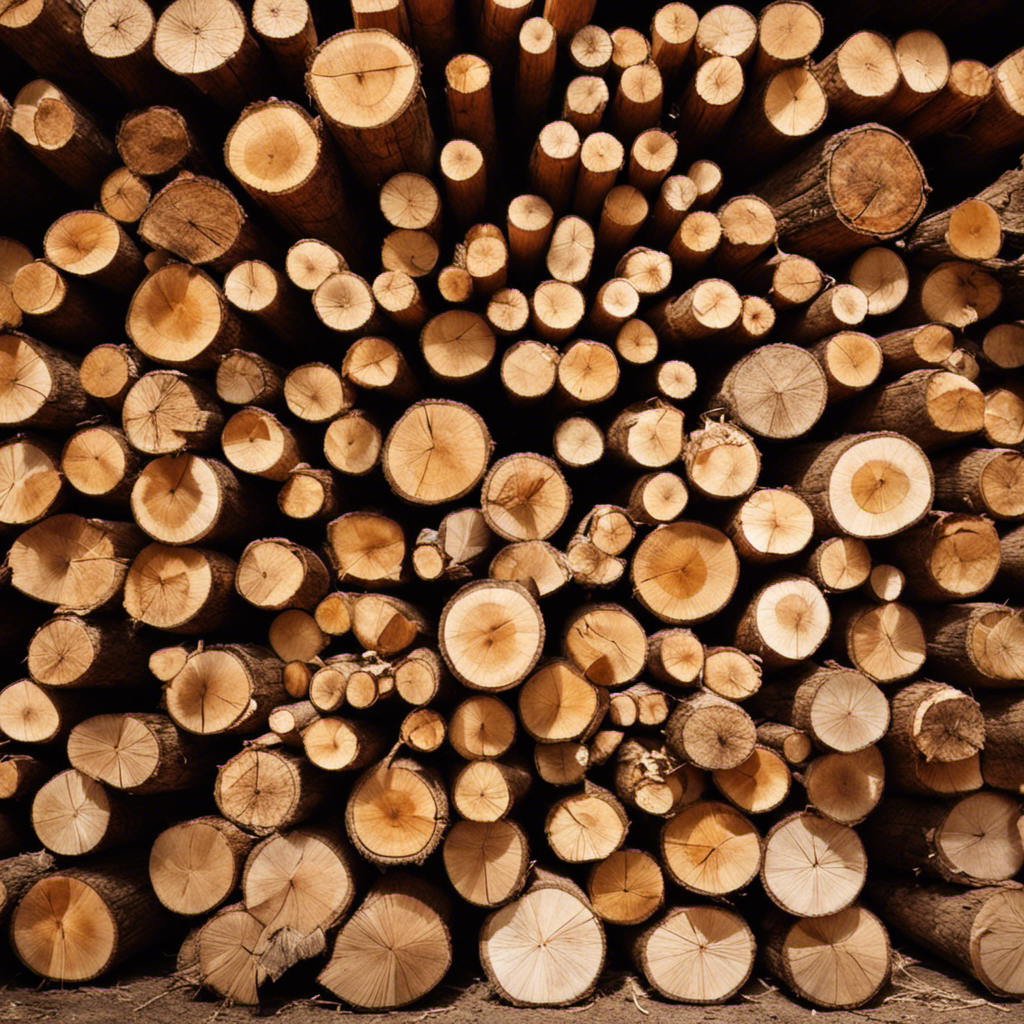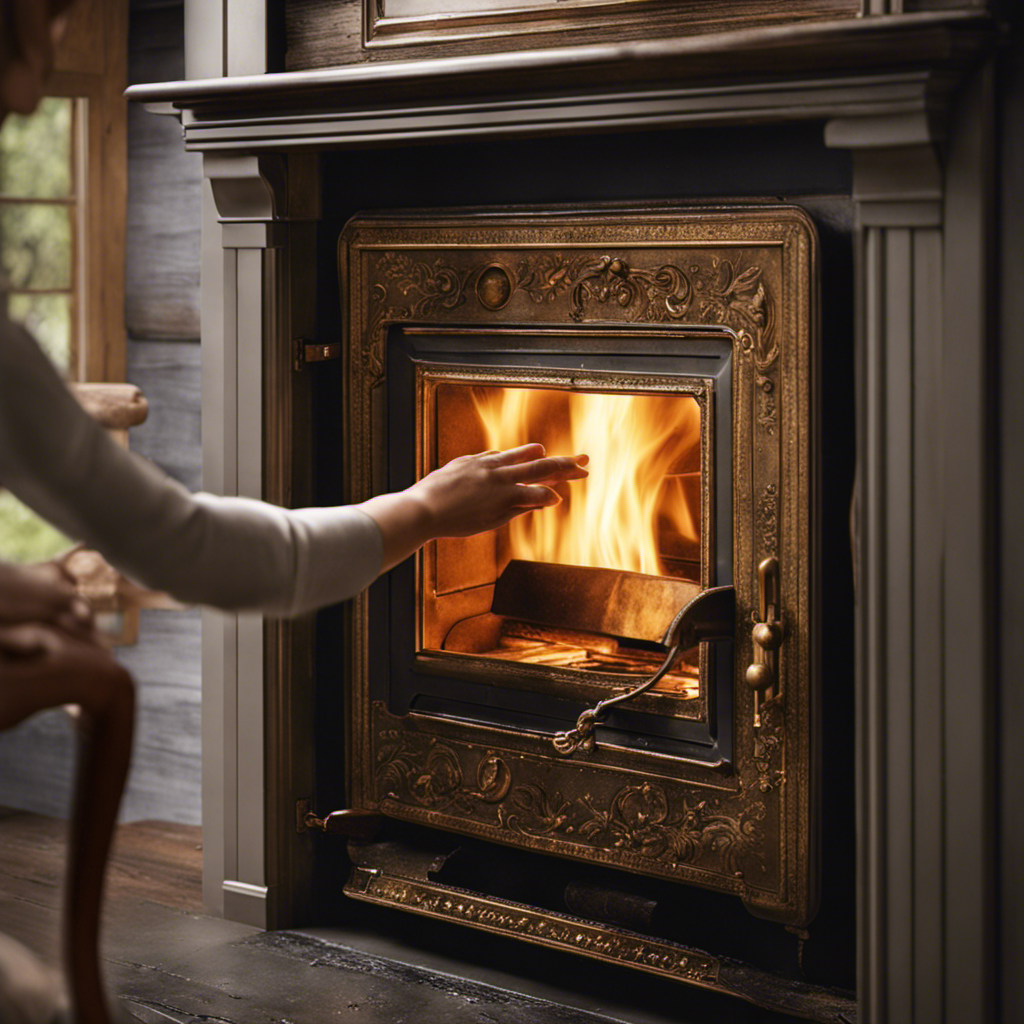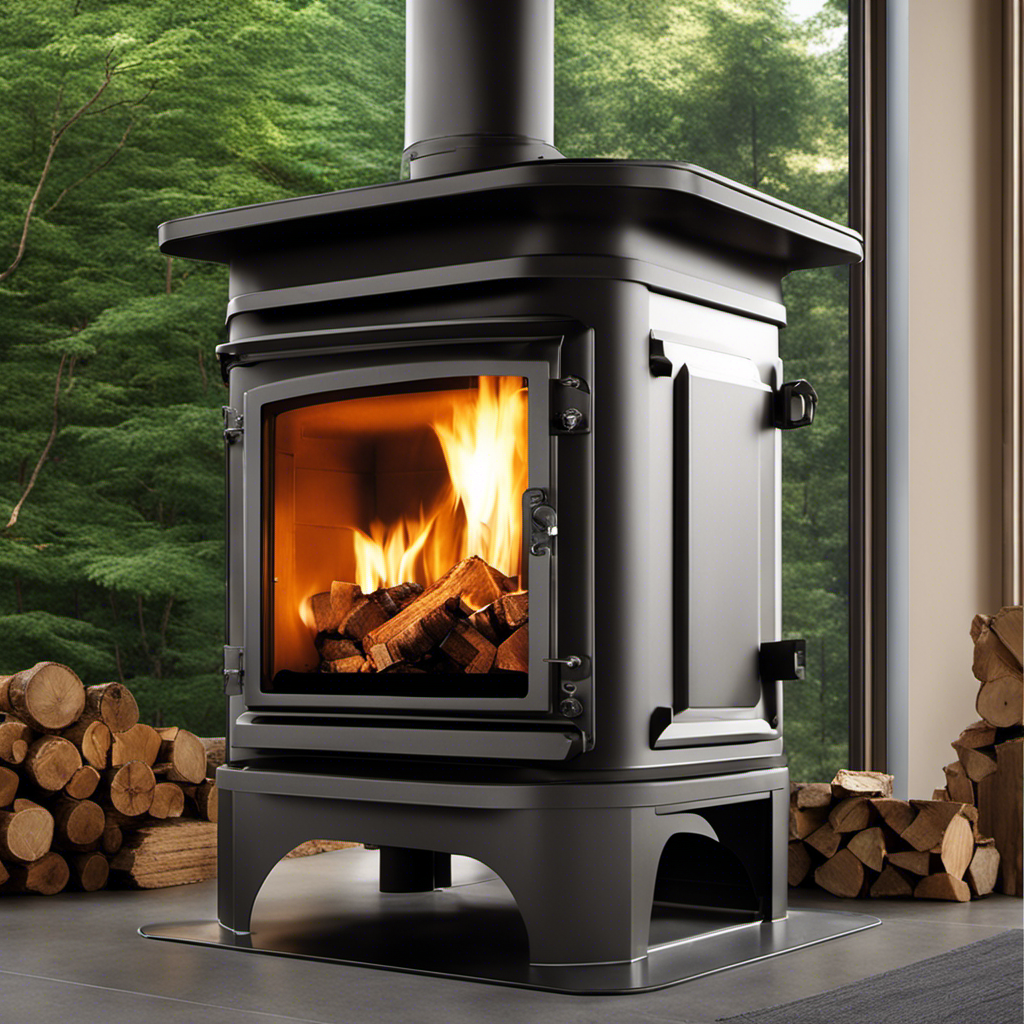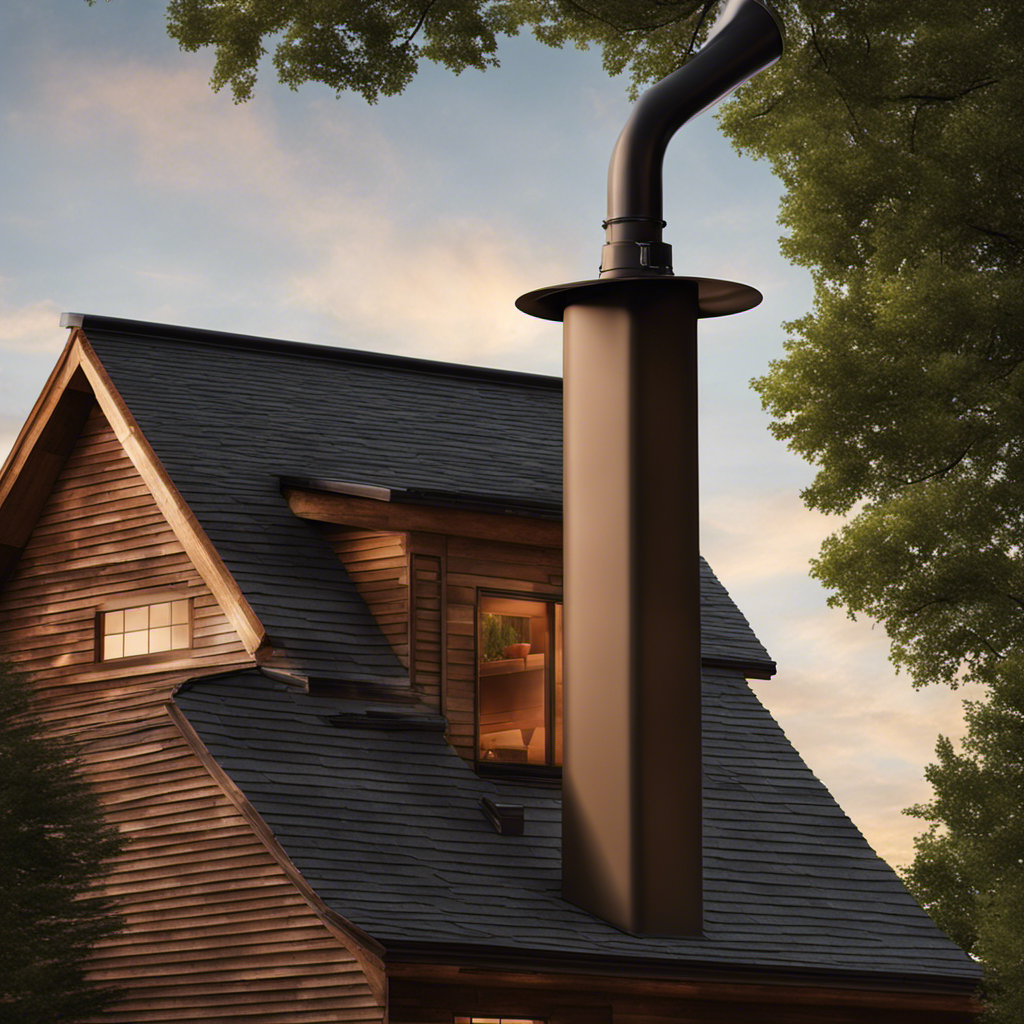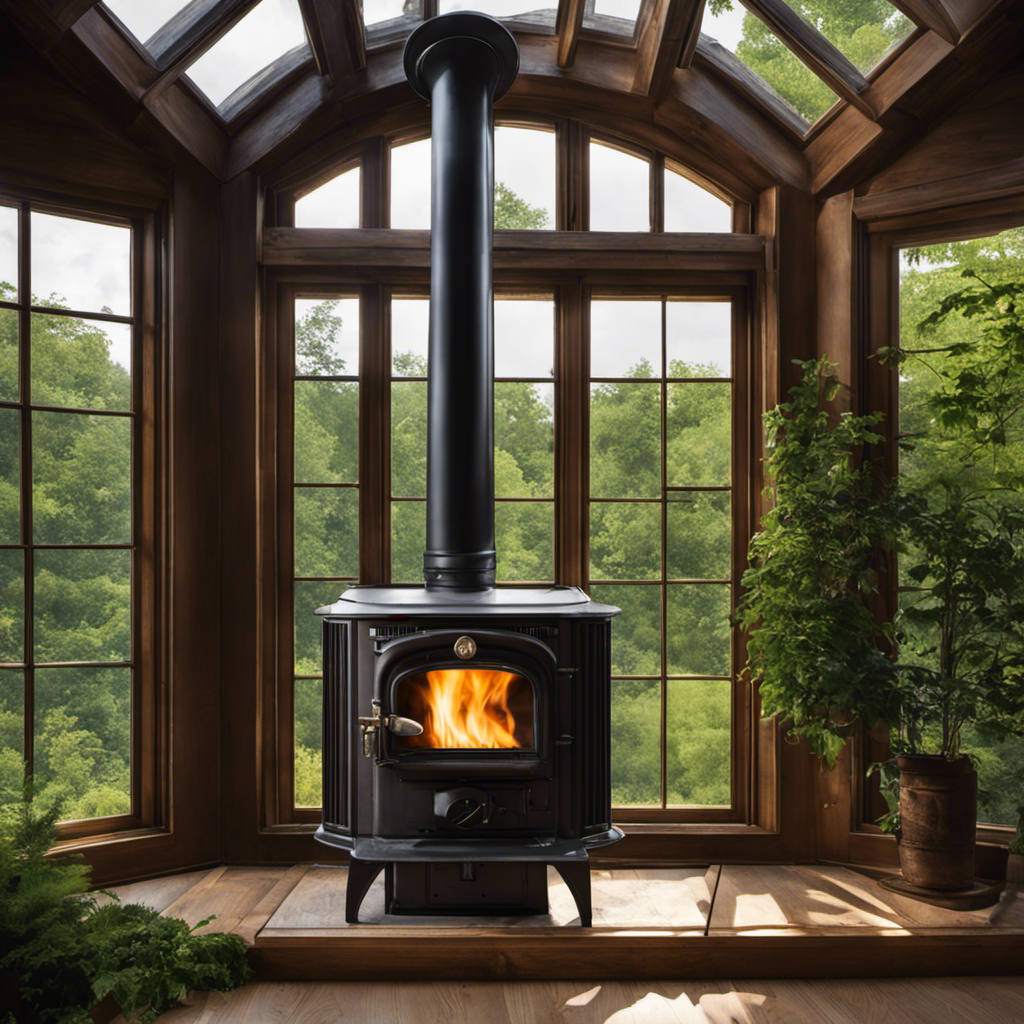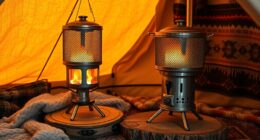Were you aware that using a wood stove to heat your home could reduce your heating expenses by as much as 30%?
If you’re ready to learn how to make a wood stove fire, you’ve come to the right place. In this article, I will guide you through the process of gathering the right materials, preparing the wood stove, building the fire structure, igniting the fire, and maintaining and controlling the fire.
Let’s get started and keep warm this winter!
Key Takeaways
- Using hardwoods like oak, maple, and birch can result in longer burning and more heat.
- Properly arranging the firewood pile ensures proper airflow for an efficient fire.
- Cleaning the wood stove and inspecting gaskets and seals ensures a successful fire.
- Igniting the fire with seasoned hardwood and gradually adding larger wood pieces allows for a controlled burn.
Gathering the Right Materials
I need to gather at least three pieces of dry firewood to make a successful wood stove fire.
Choosing the right firewood is crucial for a well-functioning fire. Hardwoods like oak, maple, and birch are ideal because they burn longer and produce more heat compared to softwoods like pine or spruce. When selecting firewood, make sure it’s seasoned and dry, as wet wood can lead to a smoky and inefficient fire.
Once you have chosen the right firewood, it’s important to arrange the firewood pile properly. Start by placing a couple of larger logs as a base, then layer smaller logs and kindling on top. This will ensure proper airflow and help the fire burn efficiently.
With the firewood gathered and arranged, now it’s time to move onto preparing the wood stove.
Preparing the Wood Stove
To ensure a successful wood stove fire, it’s essential to properly clean and inspect the stove before lighting it. Cleaning the stove is crucial to remove any built-up ash or debris that could hinder the airflow and reduce the efficiency of the fire. Start by emptying the ash pan and using a brush or vacuum to clean the stove’s interior and flue.
Inspect the gaskets and seals for any signs of wear or damage and replace them if necessary to ensure a tight seal. Additionally, adjusting the airflow is crucial for controlling the intensity of the fire.
Most wood stoves have a damper or air control lever that can be adjusted to increase or decrease the amount of oxygen entering the firebox. Experiment with different settings to find the right balance for optimal combustion and heat output.
Remember to always follow the manufacturer’s instructions and guidelines for cleaning and adjusting your specific wood stove model.
Building the Fire Structure
Using enough kindling is crucial when building the fire structure for a wood stove. Properly arranging the kindling will ensure a successful fire and promote fire safety.
To begin, gather a generous amount of dry kindling, such as small twigs and newspaper. Place a layer of kindling in the bottom of the stove, creating a bed for the fire. Make sure to leave enough space for air circulation.
Next, add larger pieces of kindling on top, forming a teepee or crisscross pattern. This allows for proper airflow and encourages the fire to ignite more easily.
If your fire doesn’t catch, check for any blockages in the flue or a lack of oxygen. Troubleshooting these issues will help you achieve a roaring fire.
Now, let’s move on to igniting the fire and enjoying its warmth.
Igniting the Fire
Let’s gather some matches and carefully light the kindling to ignite the fire in the wood stove.
When it comes to making a fire in your wood stove, there are a few important considerations to keep in mind for fire safety and efficiency. Here are three key points to remember:
-
Choosing the right firewood: Opt for seasoned hardwood that has been properly dried for at least six months. This type of firewood burns cleaner, produces more heat, and reduces the risk of creosote buildup in your chimney.
-
Properly stacking the firewood: Arrange the wood in a crisscross pattern, allowing for proper airflow. This encourages better combustion and helps the fire to burn more efficiently.
-
Using proper fire-starting techniques: Start with small pieces of kindling and gradually add larger pieces of wood. This allows for a steady and controlled burn. Use matches or a long-reach lighter to ignite the kindling, taking care to avoid any sparks or embers from escaping the stove.
Maintaining and Controlling the Fire
As I carefully add more firewood to the stove, I make sure to adjust the airflow by opening or closing the damper. Maintaining and controlling the fire in a wood stove is crucial for efficient heating and safety. One key aspect is fuel selection. It is important to use dry and seasoned firewood, as wet or green wood will produce more smoke and less heat. Another crucial factor is controlling the air flow. By adjusting the damper, I can regulate the amount of oxygen that reaches the fire. More air means a hotter fire, while less air slows down the combustion process. Finding the right balance between fuel selection and air flow is essential for maintaining a steady and efficient wood stove fire.
| Fuel Selection | Air Flow |
|---|---|
| Dry and seasoned firewood | Adjust damper to control oxygen flow |
| Wet or green wood | More air for a hotter fire |
| Finding the right balance | Less air slows down combustion |
| Efficient and steady fire | Safety and efficient heating |
Conclusion
In conclusion, building a wood stove fire requires the right materials, proper preparation, and careful maintenance.
By following these steps, you can create a warm and cozy fire that will keep you comfortable during cold winter nights.
Remember, tending to a wood stove fire is like nurturing a flickering flame, gently feeding it fuel to keep it burning bright and providing the comforting warmth you desire.
So gather your materials, ignite the fire, and enjoy the cozy ambiance of your wood stove.
Logan’s affair with adventure began in childhood. He hailed from a small town where vast forests bordered one side and endless shores stretched on the other. His days were spent exploring uncharted woods, climbing tall trees, or listening to the tales of old sailors. This early immersion in a world brimming with stories and mysteries became the foundation of his passion for writing.

